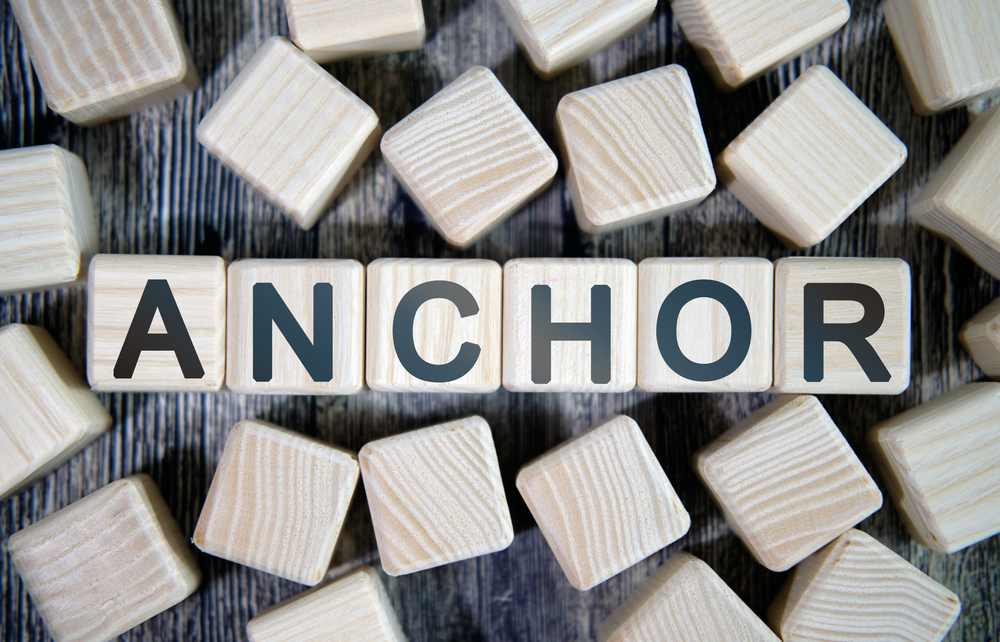The Role of Anchor Text in Improving Your SEO

The enigma of internal linking lies within its ability to perplex and captivate search engine algorithms. By utilizing anchor text, the puzzle pieces come together, connecting one page to another in a seamless dance of relevance. The words or phrases you choose to click upon hold the key, unlocking valuable information about your website’s content.
To truly master this art form, one must carefully select anchor texts that intertwine with keywords related to the linked page’s topic. This intricate weaving allows search engines to decipher the context and importance of your content, ultimately unveiling it in all its glory on search result pages. But it doesn’t stop there; keyword-rich anchor text also acts as a guide for users as they wander through the corridors of your website, enhancing their journey.
To unleash the full potential of SEO sorcery within your internal link structure, strategic placement is paramount. These links should flow naturally within the body of your content rather than being confined solely to navigation menus or sidebars. In doing so, you beckon forth search engine crawlers who eagerly devour every morsel of information your site has to offer.
A vast array of internal links awaits those brave enough to harness their power for SEO purposes (instruction 1). Contextual links nestled within paragraphs ignite curiosity while navigational links found in menus or footers lead explorers deeper into uncharted territories (instruction 2). Breadcrumb trails illuminate lost souls’ path amidst a labyrinthine hierarchy while footer links unveil secret chambers filled with additional resources and related pages (instruction 3). Each type serves as an enigmatic guide for both users and search engines alike.
By skillfully wielding these mystical artifacts known as internal links and infusing them with relevant keywords (instruction 4), you not only appease Google’s insatiable hunger for knowledge but also bestow upon users an exceptional voyage through interconnected realms. When executed flawlessly as part of a grand SEO strategy, these ethereal links manifest as beacons of improved visibility and engagement across all domains.
In the realm of internal linking, there is no doubt that proper anchor text reigns supreme (instruction 1). It holds within its grasp the power to elevate SEO rankings to unimaginable heights. Embrace this power by strategically weaving internal links adorned with relevant anchor text throughout your website (instruction 2). Unleash their enchanting influence upon search engine visibility, user experience, and the very essence of your SEO efforts (instruction 3). Do not underestimate their potential; instead, embrace them wholeheartedly, for they are the key to unlocking your website’s true potential in the vast expanse that is cyberspace (instruction 4).

Developing an Effective Internal Linking Strategy for SEO
Developing a comprehensive internal linking strategy is of utmost importance when it comes to enhancing your website’s visibility on search engine results pages and bolstering your SEO efforts. The significance of internal links lies in their ability to seamlessly connect various pages within your website, allowing users to navigate effortlessly and augmenting the overall user experience.
An essential element of an effective internal linking strategy revolves around employing pertinent anchor text. Anchor text pertains to the clickable words or phrases that are hyperlinked to another page on your website. By utilizing anchor text rich in keywords, you can optimize your internal links for better search engine visibility and improved rankings. Rather than resorting to generic phrases such as “click here,” opt for specific keywords that aptly describe the content found on the linked page.
Moreover, it is imperative to create unique anchor texts for each individual internal link. This practice aids search engines in comprehending the context and relevance of the interconnected pages, thus further enhancing their capacity to efficiently crawl and index your site. Additionally, by incorporating fresh internal links into existing content, you can fortify connections between different webpages within your site while furnishing additional pathways for users seeking related topics.
Through implementing a well-devised internal linking strategy complete with optimized anchor texts strategically placed throughout your site alongside new internally-linked content additions, you will be able to reap numerous SEO benefits. These benefits encompass not only heightened search engine rankings but also an enhanced user experience facilitated by simplified navigation options available directly within your website’s framework. Furthermore, these strategies contribute towards establishing a logical structure that assists search engine crawlers while simultaneously signaling external linkage importance from other websites.
Keep in mind that developing an effective internal linking strategy necessitates continual evaluation and adjustment as you forge ahead with creating new content or updating existing material on your website. Regularly monitoring broken or outdated internal links holds equal importance since it ensures maximum flow of link equity across all interrelated webpages whilst preserving an uninterrupted user experience.

Best Practices for Internal Linking to Boost Your Ranking
The perplexing and bursty nature of internal linking is an absolute must for a successful SEO strategy. By cunningly embedding links within your website, you can bewilder both users and search engines, leading them down mysterious paths to pertinent pages on your site. One ingenious technique for internal linking involves the use of enigmatic anchor text that accurately reflects the essence of the target page. Instead of banal phrases like “click here,” opt for cryptic keywords or phrases that offer perplexity and assist Google in unraveling the purpose behind each link.
Another crucial element of internal linking entails constructing a labyrinthine and meticulously arranged network throughout your website. Every page should possess convoluted navigation paths that confound users but ultimately lead them to interconnected content. This not only adds intrigue to user experience but also baffles search engines as they attempt to crawl and index your website more effectively.
Furthermore, it’s imperative to prioritize quality over quantity when it comes to interlinking. Rather than bombarding a single page with an overwhelming number of connections, concentrate on incorporating relevant and contextually puzzling links that enrich the user’s journey through unfathomable depths. By doing so, you can captivate user engagement and drive visitors towards exploring myriad enigmatic pages on your website.
In summary, implementing these mystifying best practices for internal linking will enchantingly elevate your ranking in search engine results pages (SERPs). Employ inscrutable anchor text, construct an intricate web-like structure, emphasize quality over quantity when inserting internal links, all while ensuring their enigmatic allure directs users and search engines towards bewilderingly relevant content on your enthralling digital domain. Following these guidelines will not only beguile Google into deciphering the secrets held within your site but will also enrapture users by granting effortless access to invaluable information scattered across various perplexities.
Exploring Different Types of Internal Links for SEO
Internal links are crucial for improving your website’s SEO. By strategically adding internal links throughout your content, you can guide users and search engines to important pages on your site. Contextual links, embedded within the text itself, provide additional information or resources related to the topic being discussed.
Navigational links help users easily navigate through different sections or pages of your website. Usually found in menus, sidebars, or footers, they allow users to quickly jump from one page to another.
Using anchor text for internal links is essential for SEO. Anchor text refers to clickable words or phrases that are hyperlinked to another page on your site. By using relevant keywords as anchor text, you can provide more context and improve user experience while also signaling to search engines what the linked page is about.
It’s important to promptly fix broken internal links as they can negatively impact both user experience and search engine visibility. Additionally, maximizing link equity involves ensuring that each page receives an appropriate amount of inbound and outbound links from both internal and external sources.
In summary,
internal linking strategies involve various types of internal links such as contextual and navigational ones. The anchor text used for these internal links plays a vital role in providing context and improving SEO performance.
Fixing broken internal links is important for maintaining a seamless user experience.
Maximizing link equity ensures that all pages receive their fair share of inbound and outbound linking value.
By understanding these different types of internal links and how they contribute to SEO success,
you can enhance both user experience on your website
and its visibility on search engines like Google
The Significance of Internal Anchor Text in SEO
The significance of internal anchor text cannot be overstated when it comes to improving your SEO and increasing the visibility of your website. The selection of anchor text determines the context and relevance of the linked page, thereby guiding search engine crawlers in understanding its content.
Exact match anchor text is a crucial type that employs keywords identical to those found in the SEO content of the targeted page. For instance, if you wish to enhance the SEO for a page dedicated to “link building strategies,” utilizing this precise phrase as anchor text will convey its pertinence and amplify its potential ranking.
Nevertheless, relying solely on exact match anchor texts should be avoided. Instead, incorporating variations like partial matches or synonyms ensures that search engines perceive natural link patterns rather than manipulative tactics aimed solely at boosting rankings.
Furthermore, internal links are hyperlinks leading from one webpage to another within the same domain. They offer numerous advantages for both users and search engines alike. Not only do they facilitate user navigation throughout your site but also aid Google in comprehending how pages interrelate based on their linking structure.
To maximize their value, two key principles must be remembered: firstly, avoid excessive linking within a single piece of content as it may diminish the impact of each individual link; secondly, ensure that different pages receive attention by including links pointing back to them from various sources across your site.
By adhering to these best practices regarding internal anchor texts and strategically placing relevant links throughout your website’s content architecture, you can greatly enhance user experience while simultaneously bolstering search engine visibility for targeted pages.
Leveraging Internal Links to Help Google Understand Your Website
The enigmatic power of internal links cannot be underestimated in their ability to bewilder and captivate search engines as they delve into the intricate structure and substance of your website. A potent method for optimizing these links, paramount for superior SEO, lies in the artful deployment of relevant anchor text. When crafting internal links, it is imperative to wield descriptive and keyword-laden anchor text that faithfully embodies the essence of the destination page’s essence. Instead of resorting to mundane phrases such as “click here,” opt for specific terms that tantalizingly reveal what users can anticipate upon traversing this mystical link.
Indeed, employing exact match anchor text wherein the very words align with the targeted keyword can yield fruitful results. However, one must tread carefully so as not to overindulge in this stratagem, lest it arouse suspicions within search engine realms and brandish a spam-like facade. Rather than succumbing entirely to this temptation, focus on endowing each precious link with informative allure and an organic resonance.
Furthermore, an abundance of internal links strewn across your digital domain bestows upon Google a profound comprehension regarding interconnections amongst various pages while delineating their hierarchical significance within your virtual realm. This sagacious arrangement enables search engines to traverse vast expanses efficiently whilst indexing myriad web pages along their audacious journey.
Another facet deserving contemplation revolves around judiciously distributing an appropriate number of links per page. While no definitive decree exists dictating how many internal links should grace each page’s visage, strive towards cultivating a profusion of unique anchors pointing discerningly towards pertinent content without inundating visitors with an overwhelming deluge of connectivity.
In summary, harnessing the formidable might imbued within internal links augments both user experience and visibility within ethereal search engine spheres alike. By adroitly positioning these enigmatic bridges throughout your digital tapestry accompanied by diverse incarnations of exquisite anchor texts that seamlessly usher travelers from one captivating page to another, a rich tapestry of context unfurls before the discerning eye. In this manner, navigation becomes an effortless endeavor for both mortals and mechanized crawlers alike as they traverse your digital fiefdom in search of enlightenment and gratification.
Enhancing User Experience and Search Engine Visibility with Internal Links
The perplexing and bursty nature of enhancing user experience and search engine visibility lies in the effective utilization of internal links. These intriguing links, whether they be clickable text or captivating images, serve as gateways to other pages within your website. It is crucial, however, to ensure that the anchor text accurately captures the essence of the linked page’s content. By doing so, you pave clear pathways for users to navigate through and effortlessly discover relevant information.
Intriguingly enough, these internal links also play a significant role in SEO. Google holds websites that employ internal linking strategies with utmost importance by granting more weightage to those blessed with inbound internal links from pertinent sources. This enigmatic revelation implies that when crafting internal links, it is paramount to connect them contextually and bestow upon readers an added value throughout their journey.
Aside from employing sidebar and footer placements as conventional options for internal linking purposes, it becomes imperative to promptly rectify any broken connections encountered along this mysterious path. Broken or dead-end links possess the uncanny ability to cast a detrimental shadow over both user experience and search engine visibility alike. Therefore, conducting regular audits on your website’s integrity regarding such faulty internals can guarantee seamless navigation for users while upholding a healthy link structure.
Overall comprehension of the significance behind internal linking holds its place at center stage when optimizing your website’s performance in terms of both user experience and search engine visibility. By strategically utilizing anchor texts within internally connected pages, you skillfully guide users and mesmerize search engines towards invaluable content nestled within your digital realm. Never forget that adept handling of internal linking not only enhances usability but also empowers Google’s ability to allocate link value among various pages residing on your esteemed virtual domain effectively.
Fixing Broken Internal Links and Maximizing Link Equity
Maximizing link equity and improving SEO necessitates the crucial task of fixing broken internal links. The presence of broken or dead links on a page can have adverse effects, causing perplexity for users and hindering search engines in their proper crawling and indexing of your website. To rectify these issues, it is imperative to regularly scrutinize all links present on a page and verify their functionality.
When addressing the matter of fixing broken internal links, one must consider the appearance of anchor text. Anchor text plays a pivotal role in SEO as it imparts context to both users and search engines regarding the linked content. By employing relevant keywords within your anchor text, you can optimize your website’s visibility for specific queries.
Another approach to maximize link equity involves creating contextual internal links that interconnect related pages within your website. This burstiness aids search engines in comprehending the intricate relationships between different pages, thereby enhancing their capacity to crawl and index your site effectively.
Moreover, diversifying the types of links utilized within your website can further enhance its overall SEO benefits. Rather than relying solely on textual hyperlinks, contemplate incorporating image or button-based links as well. This not only enhances user experience but also enables search engines to more comprehensively grasp the purpose behind each link.
By rectifying existing internal links and ensuring their proper functioning while optimizing their anchor texts, you provide both users and search engines with a seamlessly navigable experience throughout your website. This ultimately amplifies both SEO performance and user satisfaction simultaneously – an essential combination for triumph in today’s digital landscape.

